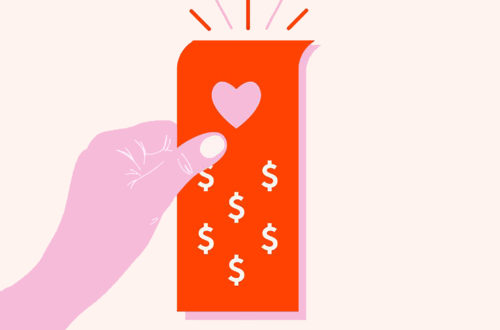Leggings as pants, smartphones, the Kardashians, Brexit, Donald Trump, Netflix: these will inevitably become the defining symbols of the 2010s. Our memories of these years, however, will be collectively stored on Instagram, which has spanned the entire decade. In many circles, but especially within the fashion world, it is apparent that Instagram dominates among competing social networks such as Facebook, Twitter, or YouTube. This is the result of a combination of factors: the high proportion of Millennials and Gen Z users, the medium of images and videos, and the feelings of intimacy generated through direct interaction. The winning formula has propelled both companies and individuals to fame by means of a novel path.
These factors, combined with the freedom and low costs of Instagram marketing, have allowed companies with a contemporary brand image to access a much wider range of audiences. Successful examples include Reformation, with the mantra, “Being naked is the #1 most sustainable option. We’re #2,” and Glossier, with the statement, “Skin first. Make up second.” Additionally, many individuals have attained celebrity-status through Instagram, some noteworthy examples being models Gigi and Bella Hadid, and blogger Chiara Ferragni.
In June 2018, Instagram reached 1 billion monthly active users, and its worldwide mobile internet advertising revenue in that year was estimated to be around 6.84 billion U.S. dollars, close to twice that of the previous year, when the same statistic was approximately 3.64 billion U.S. dollars. In other words, Instagram was bigger than ever before in 2018. In line with previous years, the forecasts point in the direction of continued growth in 2019.
However, it is worth taking a step back to survey the bigger picture. Instagram is not infallible, and it wouldn’t be unreasonable to consider a moment in the future when Instagram begins to fade from popularity. This is germane especially given that the co-founders of Instagram exited the company in September 2018. In the incredibly fast-paced environment of social media, it is all too common for platforms to fall into relative obscurity over time. The most famous example is MySpace, followed by the recent discontinuation of Vine, and in more immediate terms, Facebook. The latter’s dilemma is that many younger users are either inactive or completely foregoing a Facebook account altogether, which represents a big shift from the bustling activity of the early 2010s. It is estimated that Facebook lost 2.8 million U.S. users under 25, in 2017. In turn, more mature users have taken over the platform, which may partly be the reason for many Millennials and Gen Zs preferring Instagram and Snapchat over Facebook.
So, what are the possible outcomes if Instagram enters its eventual demise? Of course, there is no guarantee that this will occur. Given the massive success of the platform, it is entirely possible for Instagram to achieve the kind of longevity expected by Google or Amazon. However, in the case that Instagram does fade from popularity, more likely than not, users will simply divert their attention and energy to a different platform such as the up-and-coming Vero. This new social network focuses on fostering authentic social networks between users, and plans to be free of advertisements. To do this, they have built their business model on subscriptions. If not an existing platform, the successor may be an even newer and more unexpected one. Another possibility is for Instagram to converge into an app similar to Facebook, although this is unlikely given the circumstances Facebook finds itself in, and the fact that Instagram is owned by Facebook.
Courtesy of Seb Agresti for The
New Yorker
A final option is highly improbable, but worth considering for its merits, and it is for users to take a break from social media. At this point in time, reality on Instagram can be more stressful and anxiety-inducing than the genuine reality surrounding people. The prominent late neurologist and author Oliver Sacks describes in his article, “The Machine Stops,” being a daily witness to the addiction of social media:
“younger people, for the most part, who have grown up in our social-media era, have no personal memory of how things were before, and no immunity to the seductions of digital life. What we are seeing—and bringing on ourselves—resembles a neurological catastrophe on a gigantic scale.”
A world without social media is wishful thinking in 2019. It is inconceivable to imagine what brands like Reformation or Glossier would do if one morning, their numbers of followers fell to zero. Companies of all sizes have so heavily built up their image, reputation, client base, and marketing on platforms like Instagram that they are essentially reliant on its continuous popularity, at least in the short to medium run. On the other hand, digital evolutions occur so quickly that Instagram might become the MySpace of 2024. Only time will tell.
by Yongjia Cheng






